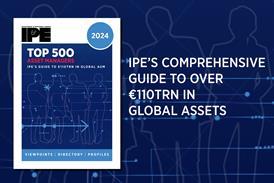Previous Top 1000 Pension Funds – Page 9
-
Special Report
Norway: Simplified Solvency II rules are on the cards
Pension funds will continue to operate under Solvency I rules this year, but there are plans for Solvency II-type requirements by 2018
-
 Special Report
Special ReportPortugal: Back on the right track
After lawmakers stabilised the public pension system, Portuguese private pension funds are poised to grow their participation in the country’s economic system
-
Special Report
Spain: Political standstill halts reform
The Spanish pension system needs significant adjustment to ensure its sustainability, but politics has got in the way
-
Special Report
Sweden: AP fund project runs out of steam
Sweden’s government has abandoned its long-held ambition to reform the AP Fund system and faces an industry opposed to the introduction of Solvency II
-
 Special Report
Special ReportSwitzerland: AV2020 project rumbles on
The federal government’s reform package is making its way through parliament but it must navigate a number of public referendums before it can see the light of day
-
 Special Report
Special ReportUK: Pace of reform slows down
Following the relative success of auto-enrolment, the UK has turned its attention to ensuring its pension system is fit for purpose
-
 Special Report
Special ReportTop 1000: Europe's slimmer regulatory agenda
The Juncker Commission is targeting the Capital Markets Union and a legislative agenda that focuses on engaging long-term capital
-
 Special Report
Special ReportAustria: Occupational pensions under pressure
Celebrating its 25th anniversary, the Austrian pensions sector faces few new regulatory challenges and the rise of a young competitor
-
Special Report
Belgium: Second-pillar reforms back on the agenda
Discussions about restricting access to the second-pillar defined-contribution scheme are under way, while the pension industry association has called for improved risk management
-
Special Report
Denmark: A change of direction
Preparing for the introduction of Solvency II in 2016 and proposals expected to broaden pension participation are top priorities for the new government
-
 Special Report
Special ReportFinland: Retirement age and contribution level changing
Ensuring the sustainability of the country’s pension system is the big challenge presently, with a particular focus on raising the retirement age and adjusting pension contributions
-
Special Report
France: Supplementary pension scheme facing depletion
The deficit of the Agirc-Arrco complementary pension system is exacerbated by France’s poor employment situation
-
 Special Report
Special ReportGermany: Sector funds still controversial
Well over a decade after the introduction of Pensionsfonds and the Riester-Pension, Germany is weighing up significant change to boost coverage
-
 Special Report
Special ReportIceland: Glimmers of hope
After seven years of capital and currency controls, restrictions on pension funds investing outside the country are beginning to be relaxed
-
Special Report
Ireland: Attention shifts to DC as health of DB sector improves
After several large changes to Irish defined benefit regulation, bigger changes are on the horizon for the defined contribution sector, as the government seeks to boost pension coverage
-
Special Report
Italy: Lack of long-term vision threatens to stifle growth
In giving more freedom to employees to make pension choices, lawmakers are in danger of slowing down the growth of Italy’s second pillar
-
 Special Report
Special ReportThe Netherlands - Entire pensions system under scrutiny
Following a nation-wide debate, the Dutch have set out to create a new pension system that will be sustainable and fair to all generations
-
 Special Report
Special ReportNorway: Getting to grips with longer life expectancy
Pension providers are adapting to the challenges of people living longer and continuing low interest rates.
-
Special Report
Portugal: Focus on sustainability
Reforming the country’s public pension system is an integral part of the government’s efforts to impose fiscal stability, as agreed in its bailout programme.
-
Special Report
Spain: Low incentives to save threaten pensions sustainability
Spanish tax reforms lack measures to encourage pension savings by workers and contributions by employers, raising questions about the adequacy of future benefits





